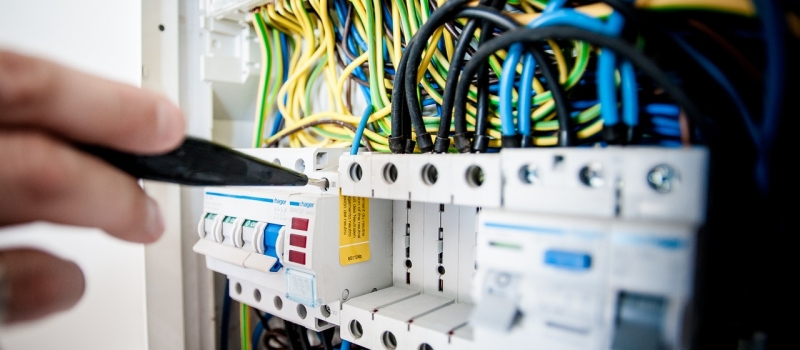Electrical Safety in the Workplace
Tuesday, May 18, 2021 Tiffany Bartz

Electricity is critical for powering businesses, but it is also dangerous. When used correctly, it powers productivity. But when used incorrectly, is a serious workplace hazard, exposing employees to electric shock, burns, fires, and explosions. Electricity flows through conductors such as metals, water, the earth, and the human body. When electrical tools are working properly, a complete circuit is maintained between the tool and the energy source. With damaged tools, a worker may come in contact with the electricity and become a path for the current. We often don’t think about electricity until we don’t have it – or until there’s an incident. And by then, someone has gotten hurt.
The best way to prevent serious workplace injuries related to electricity is to complete an electrical safety audit. This should include a review of the program, trainings according to job function, physical inspection of electrical equipment and components and any associated PPE. Additional measures that must be taken include an arc flash risk assessment and infrared study.
National Fire Protection Association (NFPA) 70E clearly states that an arc flash risk assessment should be completed and reviewed every five years, or any time modifications are made to the facility that can effect the outcome of the study. Major or sometimes minor variations such as fuse type or breaker setting adjustments can have a huge impact on personal safety.
Infrared inspections of electrical equipment should be completed annually. There are several benefits for routine infrared inspections. The biggest benefit is thermography can non-invasively pinpoint issues before they become catastrophic failures. It keeps the inspector out of harms way compared to traditional inspection of parts. It is an efficient way to locate and diagnose issues across a whole plant floor. Performing an IR study can save thousands in maintenance costs and can save downtime.
Additionally, proper employee training is essential to lowering the risks of electrical injuries at work. Most of the electrical hazards can be easily prevented and controlled with a little caution and regular checks. Employees should be trained to regularly inspect the equipment and tools they are working with and to report any damage.
Ultimately the employer is responsible for providing a safe and healthful workplace for their employees. Electricity is a danger hidden from sight, but that doesn’t mean you should ignore it. Following the regulatory guidance for electrical safety, proper training and frequent inspections will lower the risk of injury and downtime associated with electrical hazards.




